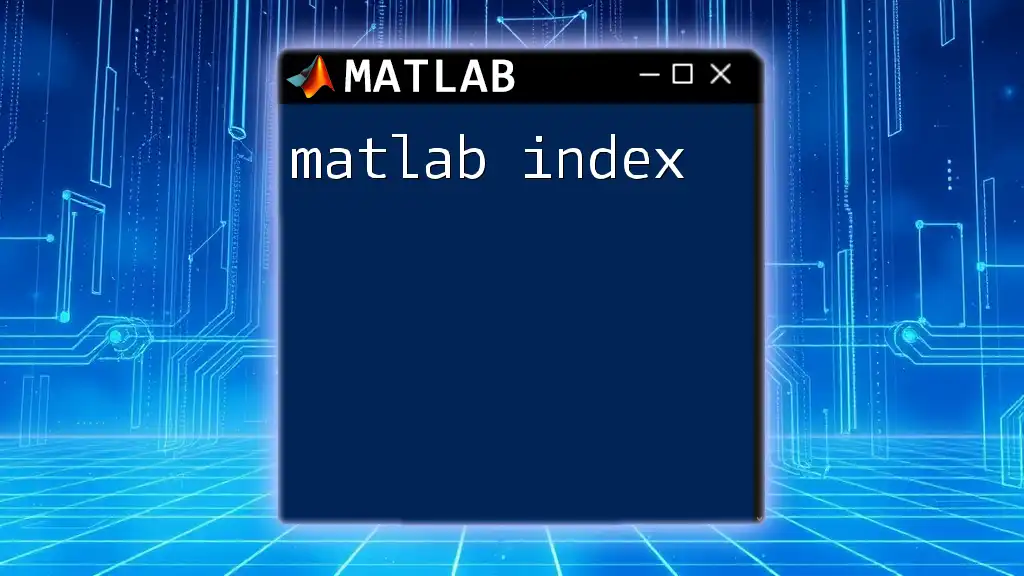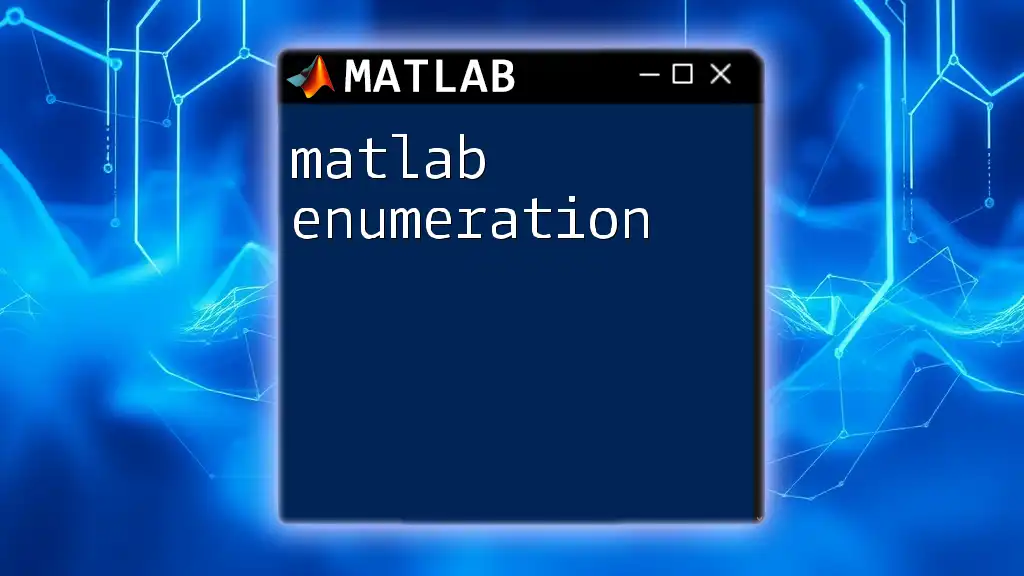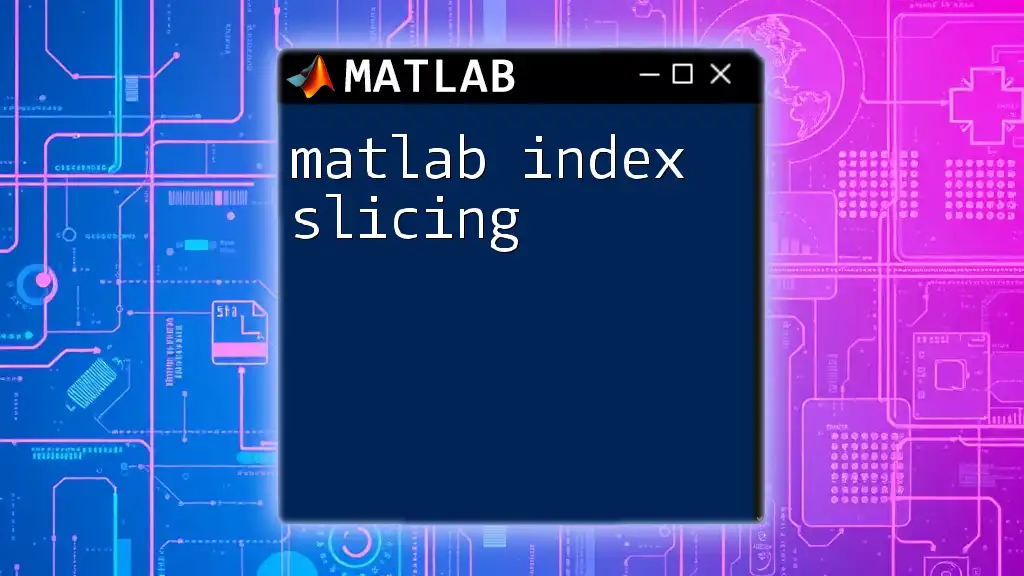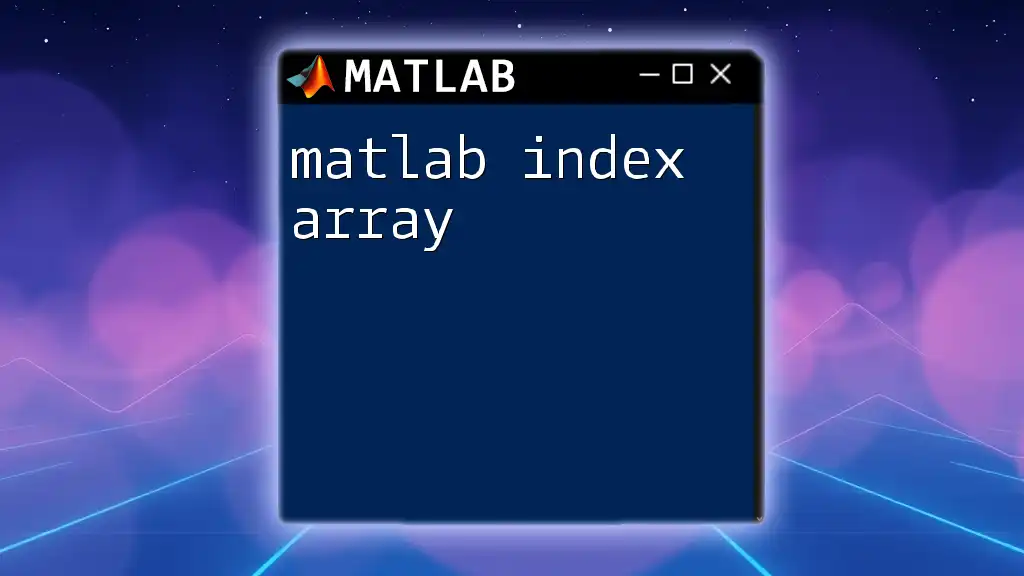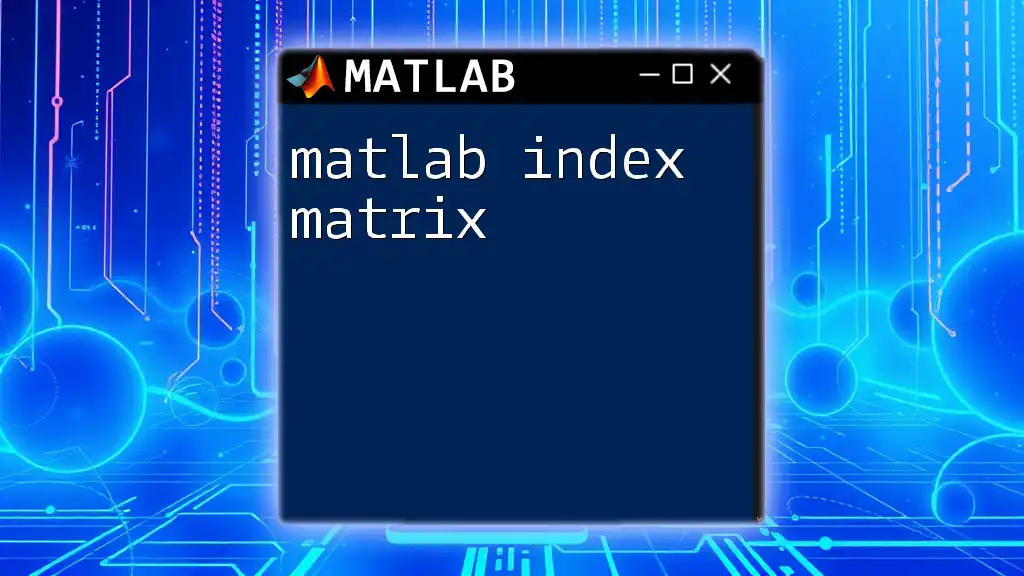The `end` keyword in MATLAB is used to reference the last index of an array or dimension, allowing you to easily access the final elements without needing to specify the exact number of elements.
Here's a code snippet demonstrating the use of `end`:
% Example of using end to access the last element of an array
myArray = [10, 20, 30, 40, 50];
lastElement = myArray(end); % Access the last element
disp(lastElement); % Outputs: 50
Understanding MATLAB End Command
What is the End Command in MATLAB?
The end command in MATLAB serves a critical role for programmers, allowing for efficient and dynamic access to the last elements of arrays and matrices. In essence, the term "end" acts as a placeholder that can dynamically represent the last index of an array or matrix depending on its size at any given moment. Understanding how matlab end works can significantly streamline code and enhance its readability, making it an essential concept for anyone learning MATLAB.
Basic Syntax and Usage
Syntax Structure
The syntax for using the end command is straightforward yet flexible. It can be utilized in various contexts to obtain the last element or to refer to dimensions in multi-dimensional arrays. The end command is often employed in the context of indexing, where it allows you to specify a range that includes the final elements without the need to know the total number of elements beforehand.
Common Scenarios
One of the most common scenarios where you might use the end command is when accessing the last element of a vector. Here’s an example to illustrate its usage:
vec = [1, 2, 3, 4, 5];
lastElement = vec(end); % This will return 5
In this snippet, `vec(end)` straightforwardly retrieves the last element from the vector `vec`. Such functionality can dramatically simplify code that deals with arrays of varying lengths.
Using End in Arrays and Matrices
Accessing Dimensions
The end command exponentially increases its utility when dealing with multi-dimensional arrays and matrices. It allows you to reference the last row, last column, or even entries in more complex array structures without pre-calculating dimensions.
For instance, consider the following example where we access the last row of a matrix:
matrix = [1, 2, 3; 4, 5, 6; 7, 8, 9];
lastRow = matrix(end, :); % This returns [7, 8, 9]
In this example, `matrix(end, :)` effectively extracts the entirety of the last row, showcasing how the matlab end command can simplify your code by automatically adapting to the matrix size.
The Role of End in For Loops and Conditional Statements
End in Loops
The end command can also be utilized within for loops to define the last iteration. This is especially helpful for loops iterating through dynamically sized datasets. With the end command, you do not have to hardcode the limits of the loop, making your script more robust.
Here’s an example of how to leverage the end command in a for loop:
for i = 1:end
disp(['Element: ', num2str(vec(i))]);
end
In this scenario, the for loop will iterate through all elements of `vec` without needing to specify the exact length, as it does automatically using the end command.
End in Conditional Statements
Additionally, the end command can play a crucial role in conditional statements. By checking against the last index, you can control flow based on whether the current iteration is the last one.
Consider this example where we print only the last element:
for i = 1:length(vec)
if i == end
disp(['Last element: ', num2str(vec(i))]);
end
end
This structure helps ensure that specific operations are performed only when reaching the last element of the vector, emphasizing how the matlab end command can effectively tailor your program logic.
Practical Applications of the End Command
Dynamic Array Lengths
One of the most notable advantages of the end command is its utility in creating functions that need to handle arrays of varying sizes gracefully. A common practice is to build functions that perform operations on the last n elements of an array. The end command enables this effortlessly.
Here’s an example function to sum the last n elements of a vector:
function total = sumLastN(vec, n)
total = sum(vec(end-n+1:end));
end
In this function, `end-n+1:end` effectively defines the range of elements to be summed, regardless of the size of the input vector `vec`. This adaptability underscores the power of utilizing the matlab end command in your code.
Common Mistakes and Troubleshooting
Misinterpretation of End Context
When working with the end command, one common mistake is to misuse it in contexts where it is not valid, leading to errors. For instance, trying to use end in an empty array will result in an error. Therefore, always ensure that your arrays contain elements before using the end command.
To troubleshoot issues related to the end command:
- Check the dimensions of your arrays to confirm they are not empty.
- Utilize debugging tools like breakpoints to understand the state of your variables when using the end command.
Conclusion
In summary, the matlab end command is a powerful tool that can enhance your MATLAB programming skills by allowing for dynamic indexing, clean and efficient loops, and conditional statements. Its adaptability makes it indispensable for anyone looking to streamline their code and approach data structures in a flexible manner.
Additional Resources
For further exploration into the matlab end command and other MATLAB functionalities, consider checking the official MATLAB documentation, online tutorials, and community forums where users share their experiences and best practices. This ongoing learning can deepen your understanding and proficiency with MATLAB commands.








